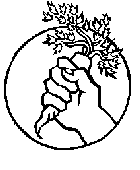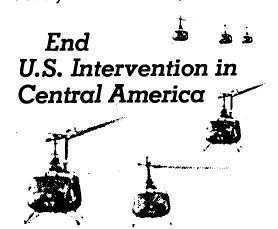
| Contents | Start | Previous | Next |
The next morning, we loaded equipment into our truck and drove from Peace Camp to the main gate. We set up, while the Wackenhuts (a pnvate army hired to "protect" the test site) amassed before the gate. They looked as though they wanted to arrest us any minute. However, we knew it was still early, and the action had not yet begun. We prepared a breakfast of miso soup and rice and beans for the activists who would soon gather here; and with the adrenaline running high, we thought back to a similar event at which Food Not Bombs fed large numbers of activists preparing to challenge government war-making by nonviolent direct action, at the Federal Building in Boston.
* * *
In the spring of 1985, the U.S.-backed government in El Salvador was massacring civilians, and the Contras were terrorizing Nicaragua. Congress was preparing to vote on sending still more tax dollars to these murderers, so the Pledge of Resistance, a national organization committed to resisting U.S. military intervention in Central America, was planning actions to stop further bloodshed. Many of the volunteers in Food Not Bombs were active in the Pledge of Resistance. If Congress voted to send more aid, we planned to shut down by occupation the JFK Federal Building 24 hours after that vote. Because we would have only short notice, Food Not Bombs took a risk that the vote would happen on May 6, and we printed thousands of posters announcing a May 7 action. The vote did occur on May 6; the Pledge consented to the action, and our posters hit the street. We arrived the next day, with our food and literature tables, and the crowd quickly grew. Before long, over 500 people had entered the lobby of the Federal Building and thousands more were chanting and showing their anger outside in the plaza. People sat on the floor and filled every inch of the lobby. As others climbed over the protesters to get into the building, the protesters sang and spoke out against Contra aid. The police tried to convince us to leave, then threatened us with arrest. However, we were solid in our resistance and refused to leave. A very powerful speak-out was held by the protesters while occupying the building and, when the building was closed at 6 P.M., the police started the arrests. Outside, supporters cheered, and Food Not Bombs continued feeding the people. Over 500 activists were arrested that day in one of Boston's most successful nonviolent direct actions and our food support helped make it possible for the protesters to stay at the building all day and most of the night.
* * *

| Contents | Start | Previous | Next |